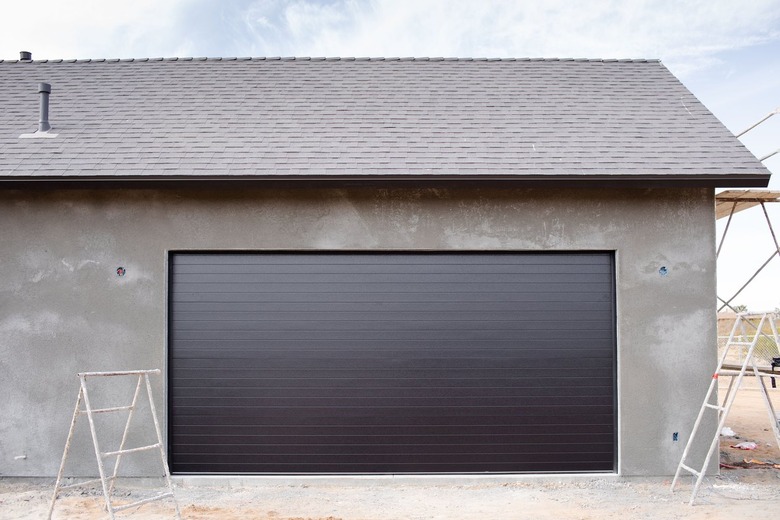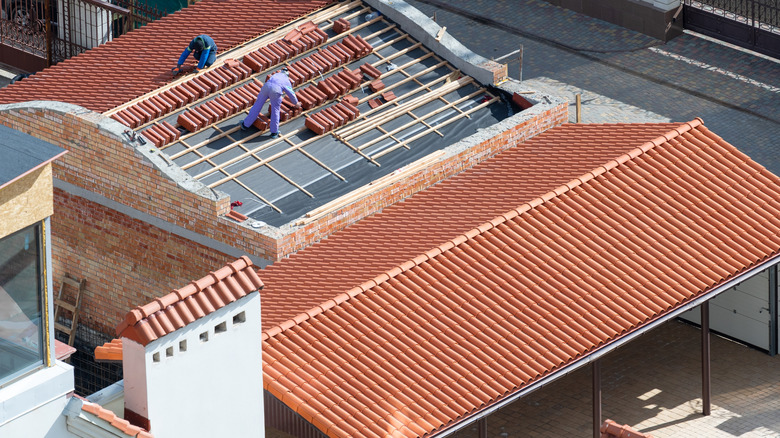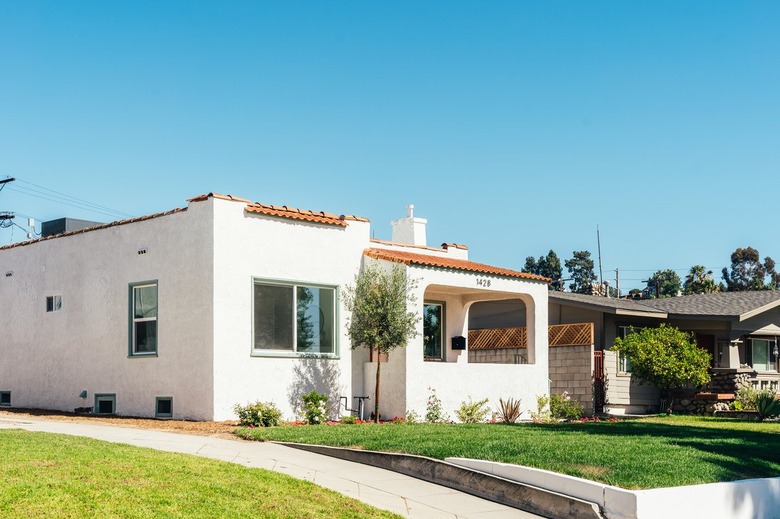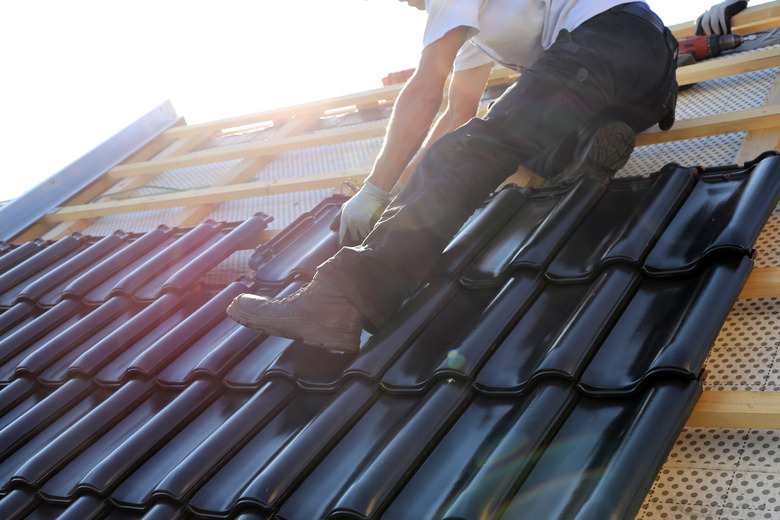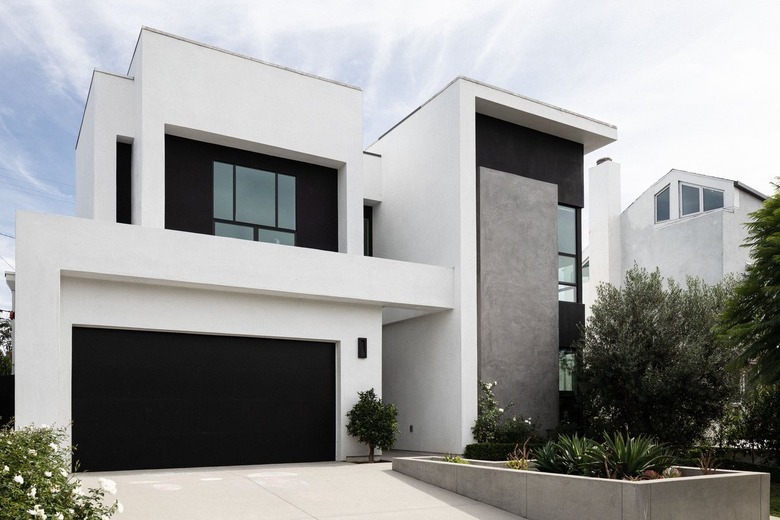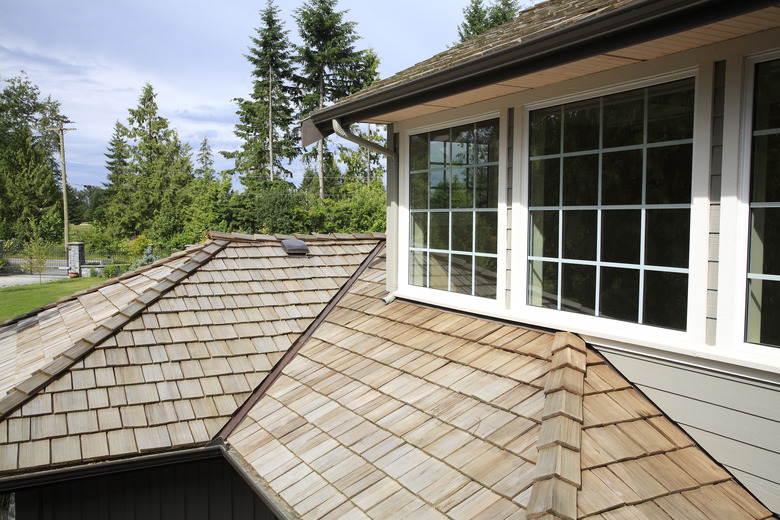Reroof Vs. Roof Replacement: What's The Difference? (And What's Best For Your Home?)
We may receive a commission on purchases made from links.
When an old shingle roof starts showing signs of wear and minor roof leaks begin to appear in the attic, it's time for a new roof. The big question for homeowners is whether to reroof or opt for a complete roof replacement. The decision is akin to fixing up an old car as opposed to buying a new one.
As far as your home is concerned, roof replacement is always the better option. Like a new car, a new roof will last longer and look better, and you won't have to worry about minor problems that you didn't notice turning into big problems in the near future. There's no need for a list of pros and cons here; pretty much the only disadvantages of roof replacement are the cost and the time needed for the job, but those can often be overarching priorities — especially cost.
Just as the cost of a new car may prompt you to fix up your old one, the cost of roof replacement may be a motivating reason to opt for reroofing. While not always an option, reroofing — which means installing new roofing materials, such as asphalt shingles or metal roofing, directly over your old roof without removing the old roof covering — is not only less expensive than tearing off the old covering and replacing it but it's also faster, and there are situations when speed is of the essence, such as when leaks happen in the middle of the rainy season.
Tip
While reroofing, which means installing new shingles over existing ones, may be cheaper in the short term, a roof replacement is a better long-term value. Cost considerations aside, reroofing might not even be an option.
The Difference Between Reroofing and Roof Replacement
The Difference Between Reroofing and Roof Replacement
When you reroof your home, the new roof goes directly over the old one. The roofers simply bring bundles of shingles or sheets of metal roofing onto the roof and install the new roof covering after first cleaning the old roof, patching obvious leaks, and killing and removing moss and algae. Except for dealing with moss, the whole process can often be completed in a day by a roofing crew with a sufficient number of workers.
If you opt for a roof replacement, which is too big a job for most homeowners to DIY, a roofing contractor tears off all the existing shingles and underlayment. Once the roof decking is exposed, the contractor repairs parts that have suffered water damage and then installs brand-new underlayment and a new roof covering. The process also involves installing new flashing and drip edge and replacing the air vents.
The tear-off produces truckloads of scrap materials that have to be collected, hauled away, and discarded. The subsequent replacement calls for more materials than just the new roofing; you also need underlayment, flashing, sealants, and — if any part of the decking needs to be replaced — plywood. Some companies claim to be able to do a complete roof replacement in a day, with some workers doing the tear-off while others follow behind them installing the new roofing. You should avoid such a roofing company because a fast job like that is usually slipshod. A more realistic time estimate for a roof replacement is three days to a week depending on a number of factors, not the least important of which is the weather.
Reroofing Might Not Even Be an Option
Reroofing Might Not Even Be an Option
Before you start counting the money you'll save by reroofing, you first have to decide if your roof is even a candidate for it. Don't even think about simply installing a roof overlay if:
- Your roof already has more than one layer of shingles. Building codes across the country prohibit installing more than two layers because the extra weight can cause the roof to sag or can compromise the structure of the building.
- The roof is sagging. If you see noticeable sags and valleys between the rafters, the decking has to be replaced, and that calls for a tear-off and roof replacement.
- You have metal roofing. If you want to install a new shingle or metal roof, the old metal roofing has to go.
- You have venting problems. If the old roof shingles deteriorated before their warranty period expired, you have frequent ice dams, or you see signs of moisture damage in the attic, you need to redesign your attic ventilation, and that may call for moving one or more roof vents. This is much easier to do during a roof replacement.
- The roof has architectural shingles. Manufacturers generally don't recommend installing new shingles over architectural shingles, and the result usually isn't very attractive. Because architectural shingles are thicker and have a three-dimensional profile, the new asphalt shingle roof looks wavy and uneven.
You should also opt for roof replacement if a number of existing shingles are missing or if algae growth is excessive. You can kill algae and brush it off the existing shingles, but if a lot of it has been growing, it may have gotten under the shingles and caused water damage to the decking. The only way to tell for sure is to remove the old shingles.
A Whole New Roof Is a Better Investment
A Whole New Roof Is a Better Investment
You'll definitely save money up front by opting for reroofing over roof replacement. The estimated cost of reshingling an average size, not-too-complex roof is in the neighborhood of $5,000, while the national average cost for roof replacement at around $22,000, which is more than four times as much.
When you consider the value a new roof adds to the home's value, the upfront costs don't seem as daunting. The return on investment for a complete roof replacement is almost 70 percent, according to Zillow, and a new roof makes the home more attractive to buyers. Reroofing over old shingles doesn't offer the same curb appeal and could be a red flag for inspectors, especially if the roof shows signs of sagging or other problems.
Even if you aren't planning to sell your house in the near future, roof replacement is a sounder investment because it gives you peace of mind knowing your new roof is guaranteed for the warranty period of the roof covering — typically 20 to 30 years for shingles and a little longer for metal roofing. Besides that, a reputable roofing contractor usually provides a 10-year workmanship guarantee. You're unlikely to get these guarantees if you leave your existing roof covering in place and just shingle over it, and if the roof leaks, your homeowners' insurance may not cover the repair.
Looking at It Long Term
Looking at It Long Term
In the short term, reroofing might seem like the best option because it costs less, and if you're experiencing roof leaks, it's a faster solution. If you think ahead, though, it could create headaches like these down the road, especially if your roof isn't in good shape:
Increases the Amount of Labor
When you do decide to reroof — which is inevitable if you live in the home for 20 to 30 or more years — you have two layers of shingles to tear off instead of one, which increases the amount of labor and the expense. If you sell the house, you're relegating the problem to the new owners. This is one reason home inspectors often flag double-layered roofs.
Water Damage Issues
If any part of the roof decking has water damage, you won't know until it turns into a major problem. Part of the benefit of a roof replacement is that it gives you an opportunity to replace damaged parts of the roof deck, including down near the eaves, where water sometimes seeps under the drip edge and rots the plywood.
Extra Weight
The extra weight puts stress on the roof framing, and even if building codes allow two layers of shingles, it isn't always a good idea. Sags that were barely noticeable could become more pronounced, and the leaks you were trying to stop could get worse. If you get a lot of snow accumulation, you should think twice before adding to the weight of the snow with an extra layer of roofing. Building regulations in snowy regions may not allow two layers at all.
Potential Skylight Issues
If you have skylights, you're setting yourself up for a headache if one of them develops a leak. You'll have to remove and reinstall two layers of shingles instead of one to get to the flashing to reseal or replace it.
Roof Covering Options for Reroofing
Roof Covering Options for Reroofing
If you decide to reroof and your roof is a good candidate for it, shingles aren't the only type of roofing you can install. Cedar shakes and metal roofing are two options you might consider if you want to change your home's appearance or — in the case of metal — improve its ability to shed snow. Both of these materials are lighter than asphalt shingles, although they call for an underlying batten system that increases the overall weight of the roof system somewhat. The battens are laid out parallel to the ridge line and are nailed through the old shingles, and the roofing material is attached to the battens.
If you're looking to upgrade the appearance of your house, you may be considering architectural shingles as an alternative to conventional three-tab shingles. Architectural shingles will undoubtedly look better but keep in mind that they weigh at least 50 percent more than three-tab shingles. That isn't necessarily a deal breaker as far as code compliance goes, but it might be, so check with a local builder or home inspector before you buy or do anything.
References
- Stay Dry Roofing: Top Differences Between A Reroof vs. Roof Replacement
- Advanced Roofing: Re-roofing vs Roof Replacement, What Is Right for Me?
- Bill Ragan Roofing Company: 8-Step Process to Replace Your Roof
- Zillow: How Much Value Does a New Roof Add?
- InspectAPedia: Re-Roof with Wood Roof Shingles & Shakes
- Expert Home Report: How Much Weight Can My Roof Hold? A Comprehensive Guide
- Dumpsters.com: How Much Do Shingles Weigh?
